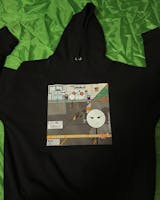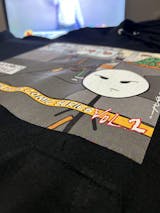One of the most important points for transferring the creative and special world of DTF Printing transfer to your world is heat paper. There are various thermal papers and having knowledge about this subject is necessary to understand the importance of thermal paper. The DTF print transfer process involves printing patterns on a special thermal film and then transferring this film to the textile surface under heat and pressure. We can examine the importance of thermal paper in this process, title by title, as follows.
Pattern Quality: The quality of the patterns produced by the DTF printing transfer process depends on the quality of the thermal paper used. A good thermal paper ensures that the patterns are clear, sharp and vivid.
Color Durability: A quality heat paper prevents the patterns from sticking tightly to the textile surface and the colors from wearing out. This ensures the long life of the products.
Easy to Use: A good heat paper helps make the DTF printing transfer process easy and efficient. Having the paper of appropriate thickness and adhesive properties makes the process more efficient.
Environmental Friendliness: Thermal papers used during the DTF printing transfer process must be made of materials that do not harm the environment. This is important for environmental awareness.
Cost Effectiveness: A quality thermal paper can reduce the cost of the print transfer process because it helps produce fewer errors and waste.
Difference Between Heat Transfer Paper and Iron-On Transfer Paper
While heat transfer paper is very popular, ironing transfer is also very popular and a matter of curiosity. In theory, they are sister transactions as transactions, but there are some fundamental differences between them. We can examine these basic differences respectively as follows.
Heat Transfer Paper: Heat transfer paper is used with machines that require heat and pressure, such as a hot press or heat press. The printing process takes place by applying the paper to the textile surface with the help of these machines. This method is often used in professional and industrial applications.
Iron-On Transfer Paper: Iron-on transfer paper is a simpler transfer method that can be applied with a home iron. This paper allows the printed pattern to be transferred to the textile surface by ironing.
Heat Transfer Paper: Heat transfer paper is more difficult to use at home as it requires professional or industrial printing machines. In addition, the correct temperature and pressure settings of these machines need to be made.
Iron-On Transfer Paper: Iron-on transfer paper can be easily used at home and requires less experience. It can be applied at home by simple ironing process.
Heat Transfer Paper: Prints made with heat transfer paper are generally more durable and washable. Therefore, it is preferred for long-lasting prints on clothing and textile products.
Iron-On Transfer Paper: Prints made with iron-on transfer paper may not be resistant to frequent washing and their colors may fade over time. Therefore, it is more suitable for decoration or hobby projects.
What are the Transfer Paper Types?
The choice of transfer paper varies depending on the suitability for the type of your project. You can consider different options such as heat transfer paper for clothing, ironed transfer paper for home decoration, water transfer paper for ceramics. The right type must be selected taking into account the material, printing technology and area of end use. Transfer paper options are as follows.
- Heat transfer paper
- Transfer paper with iron
- Water transfer paper
- Thermal transfer paper
- Laser transfer paper
- Sublimation paper
- Carbon paper









